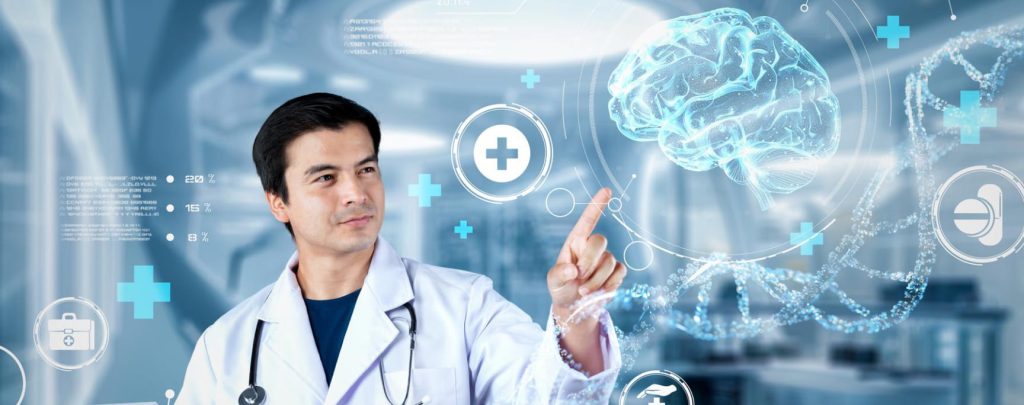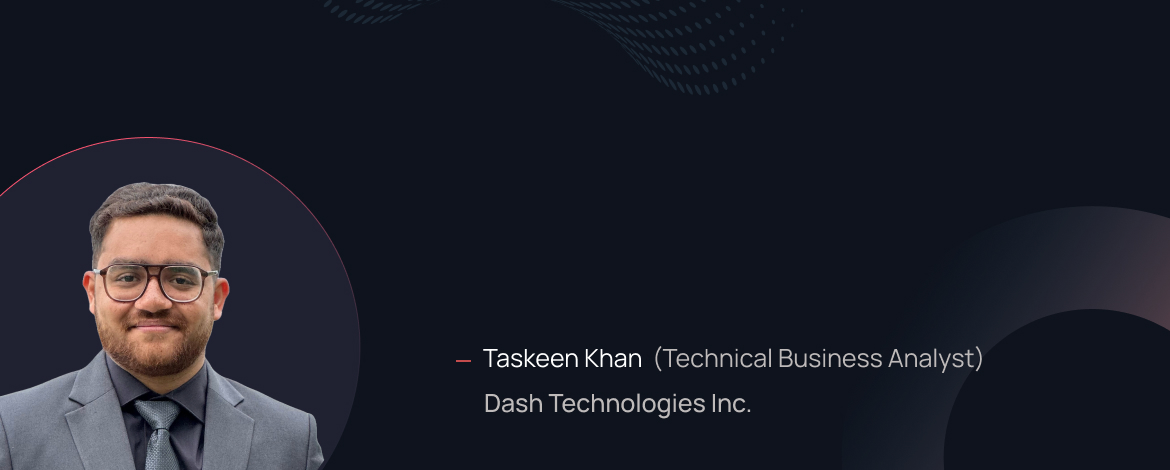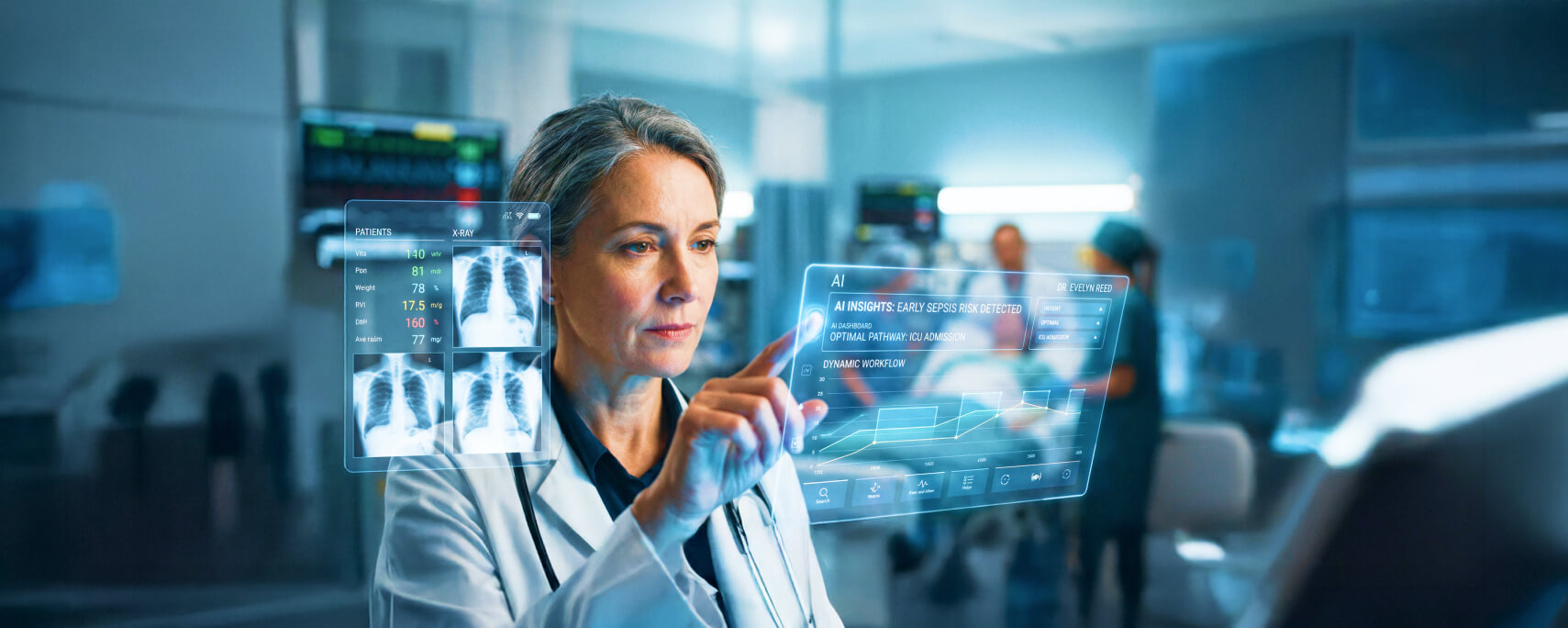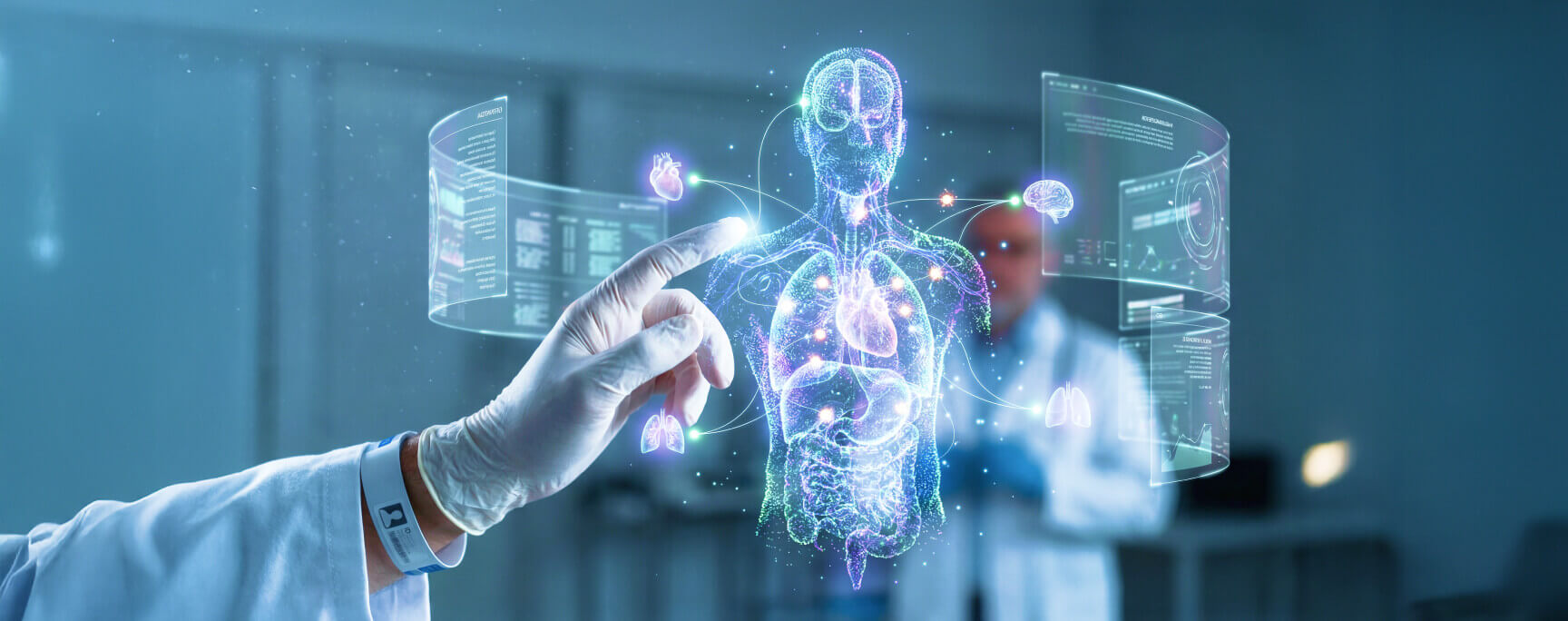7 Breakthroughs Shaping the Future of AI in Healthcare for 2026
Healthcare has been experiencing its most transformative period since the dawn of modern medicine. As we near 2026, artificial intelligence is now a real force. It is changing every part of our lives, including medical care. The future of AI in healthcare offers unmatched accuracy, effectiveness, & affordability. It will change how we diagnose, treat, and prevent illnesses.
From paper-based records to electronic health records (EHRs), from siloed lab systems to integrated platforms, the digitization journey has been underway. Yet, what we’re witnessing now is not just digitization, but intelligence—the infusion of AI into core clinical, operational, and patient-facing systems. In this article, we will uncover 7 AI healthcare innovations making a difference and discover how they’ll shape 2026.
7 Key AI Innovations Shaping Healthcare in 2026
The healthcare landscape in 2026 is being reshaped by AI-driven breakthroughs. From automation and predictive analytics to generative AI, these seven innovations are setting new standards in precision, speed, and patient outcomes.
Generative AI: Transforming Clinical Documentation and Drug Discovery
Generative AI, or GenAI, is transforming the future of AI in healthcare. It’s at the leading edge of healthcare AI trends in 2026. Generative models stand out from regular AI tools. While conventional AI only classifies or predicts, these models can create new content. They can create clinical notes and synthetic patient data. also develop new drug compounds for targeted therapies. They are among the most significant AI healthcare innovations, both in practice and research.
In clinical documentation, GenAI delivers major efficiency gains:
- Automatically generate discharge summaries, operative notes, & referral letters.
- Transcribes doctor–patient conversation into structured clinical summaries in mere seconds.
- Lowers admin tasks, allowing doctors to spend more time with patients. This helps reduce burnout.
In drug discovery, the impact is equally significant:
- Simulates and tests millions of chemical compounds within weeks, compared to the decade-long traditional process.
- Speeds up drug candidate optimization. This can shorten lead development time by up to 70%.
- Bring treatments to market rare diseases and rapidly spreading pathogens, where time-to-market is crucial.
Biopharmaceutical companies will rely on AI to design drugs by 2026. This will change the costs and timelines of drug development. These advancements show how generative AI is changing medicine. They push innovation in the entire healthcare ecosystem.
Let’s Build Smarter Workflows with GenAI
Collaborate with us to build generative AI solutions that reduce time, cost, and complexity across the care and discovery continuum.
Partner with UsComputer Vision: Enhancing Diagnostic Accuracy Across Specialties
Computer vision has changed from research to a key AI healthcare innovation. CV enables AI systems to perceive and comprehend images and videos. It now plays a vital role in clinical practice. These systems are no longer just extra tools. They are clinically validated. In many cases, they match or even beat human experts in accuracy. This includes CT scans, X-rays, MRIs, and pathology slides. They spot patterns and odd signs linked to cancer, heart disease, and other major health problems. The strength of these systems comes from three main features:
- Pattern recognition: Identifying subtle biological markers invisible to human observation.
- Speed: Processing complex medical imaging in seconds rather than hours.
- Consistency: Delivering uniform results by avoiding fatigue and reducing diagnostic variability.
Real-world uses are already changing clinical workflows. Google’s DeepMind Health discovered that AI can detect eye diseases in retinal scans as effectively as leading specialists.
In the future, healthcare AI will grow exponentially. By 2026, almost 90% of hospitals will have adopted AI-driven diagnostics and remote monitoring technologies. The shift heralds a shift from reactive treatment models to proactive, preventative care.
Natural Language Processing (NLP) & Clinical Text Intelligence
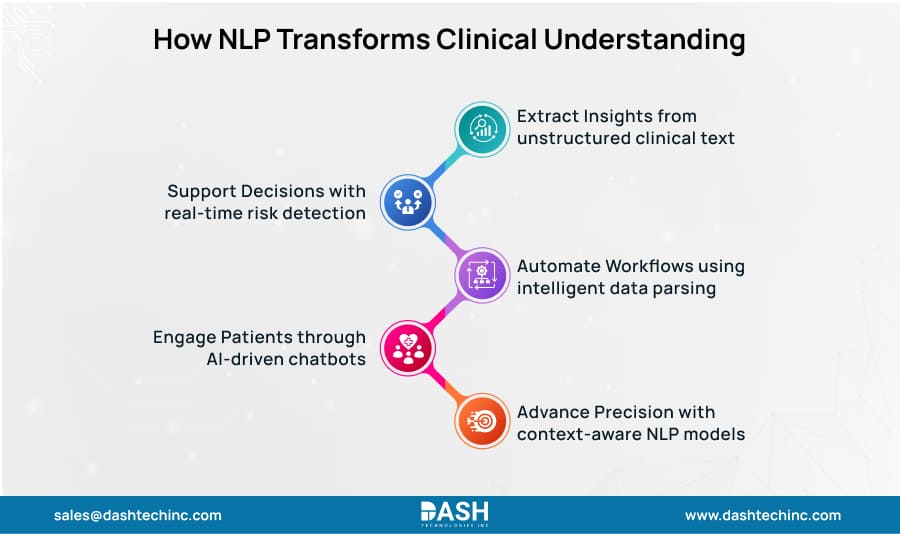
NLP equips machine learning to read, interpret, & generate human language. In healthcare, it means several critical applications:
- Data extraction: NLP helps extract structured data from unstructured physician notes, pathology reports, & discharge summaries.
- Clinical decision support: It supports clinical decision support by flagging drug interactions, missing follow-ups, or risk factors buried in text.
- Patient engagement: Powering conversational agents and chatbots for scheduling, triage, and routine inquiries.
The trend in healthcare AI trends in 2026 will push NLP toward greater clinical context awareness & multimodal alignment (e.g., combining notes + imaging + labs). Models will also better understand medical jargon, negations, temporal constraints, and causal inference — improving safety and relevance.
Surgical Robotics: Precision Medicine in the Operating Room
AI in surgical robotics drives precision medicine. It combines mechanical accuracy with smart decisions. The MISSO Robotic System helps with custom pre-surgical planning. It ensures accuracy in complex procedures, like joint replacements. This way, you get reliable results. The market is booming; with forecast from $5.16 billion in 2021 to nearly $21 billion by 2030. This shows strong trust in AI healthcare innovations and AI-enhanced surgical tools.
Key advantages of AI-powered surgical systems include:
- Real-time analysis of patient data to inform decision-making
- Adjustment for anatomical variations to enable safer procedures
- Better patient outcomes with shorter recovery times
- Minimally invasive approaches that expand surgical possibilities
New platforms are advancing AI-powered surgical metaverses. These immersive spaces blend AI and extended reality for hands-on training and real-time 3D guidance. Organizations must align development with strong AI governance frameworks for medical devices to ensure safety to follow healthcare AI trends in 2026.
Wearables, Biosensors & Edge AI for Continuous Monitoring
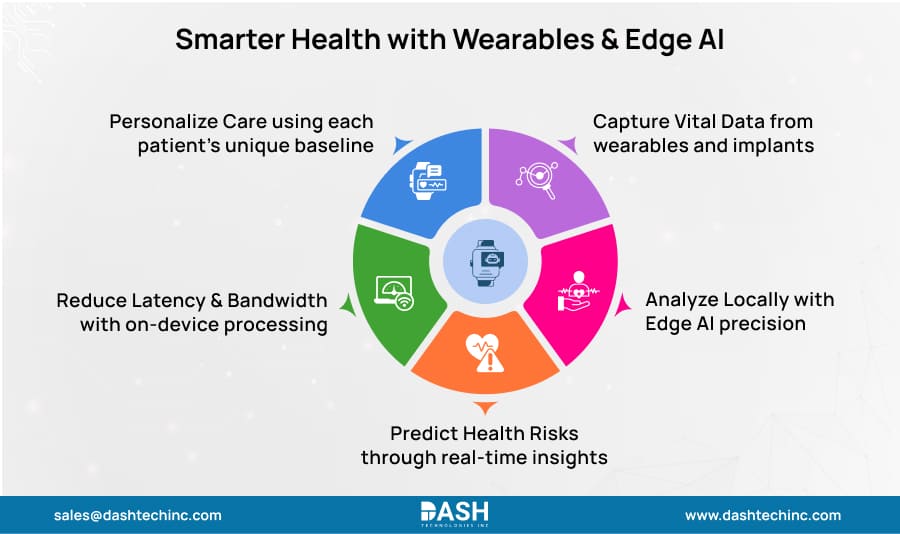
Wearables and implantable sensors generate streams of physiological data: heart rate, oxygen saturation, ECG, glucose, motion, etc. The next wave is edge AI — processing and acting on data locally (on the device) rather than routing everything to the cloud. Applications include:
- Early detection of arrhythmias, sepsis, or glucose anomalies
- Behavioral monitoring (sleep, activity) associated with chronic disease management
- Closed-loop systems (for e.g., insulin pumps autonomously modifying dosing)
- Remote monitoring and alerting in home-based care
By 2026, these systems will blend advanced signal processing, anomaly detection, and personalization (models that learn each patient’s “baseline”). Latency, bandwidth, and privacy risk are all decreased by Edge AI.
Predictive Analytics & Precision Forecasting
To predict future events or hazards, predictive analytics use historical data. In the medical field, this comprises:
- Risk stratification: Who’s likely to be readmitted, suffer complications, or deteriorate?
- Population health forecasting: Predicting outbreaks, resource utilization, staffing needs.
- Personalized treatment outcome predictions: Which therapy path is most likely to succeed?
- Operational optimizations: Predicting supply usage, equipment failure, or process bottlenecks.
In the future of AI in healthcare, predictive models will evolve. They will update continuously as new data comes in. These models will support decision systems, alert clinicians or starting automated workflows. For success, healthcare providers must focus on data quality, explainability, and governance.
AI-Enabled Remote & Virtual Care (Telehealth & Beyond)
The pandemic accelerated remote care; AI is now pushing it further. Innovations include:
- Virtual health assistants help by:
Triage symptoms
Monitor chronic conditions remotely
Escalate care when needed
- Tele-ICU or remote monitoring platforms enhanced with anomaly detection & early warnings.
- AI-driven rehabilitation and therapy via augmented reality, virtual coaching, or biofeedback.
- Digital twins and virtual patient models help simulate disease progression and how patients respond to treatments.
By 2026, remote care will be smarter and more connected. It will shift from occasional visits to continuous, proactive relationships. AI will help filter noise, identify interventions, and reduce clinician fatigue.
Building the Foundation for Successful AI in Healthcare
The future of AI in healthcare is not far ahead; it’s coming fast. For leaders, adopting it early is crucial. Getting ready for 2026 means more than just buying new tech; it’s about creating a new way to deliver care. Organizations that don’t adapt to risk losing efficiency, quality, and patient satisfaction.
Success needs a well-rounded approach. Leaders should improve data infrastructure because of high-quality, secure data fuels AI. They also need to address ethical and regulatory issues. This includes data privacy and algorithmic bias. This ensures compliance and builds trust. Moreover, technology should fit easily into clinical workflows to help clinicians. It’s also vital to foster an AI-ready culture through training. This creates an ecosystem where AI supports clinicians and improves patient care.
For more insights, download our free eBook: “AI in Healthcare: The 2026 Playbook.” Want to see how AI can change your healthcare services? Contact Us to learn how our custom AI solutions can help you innovate and lead.
About Dash

Dash Technologies Inc.
We’re technology experts with a passion for bringing concepts to life. By leveraging a unique, consultative process and an agile development approach, we translate business challenges into technology solutions Get in touch.
